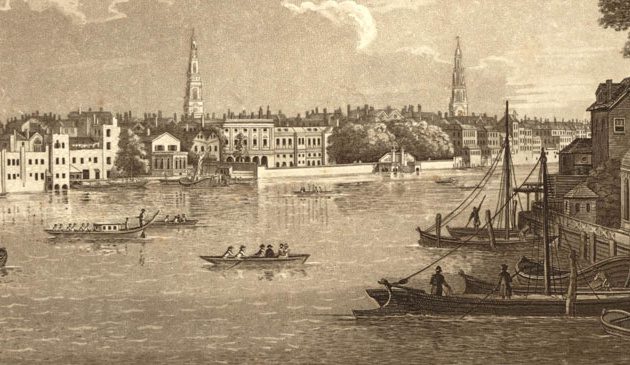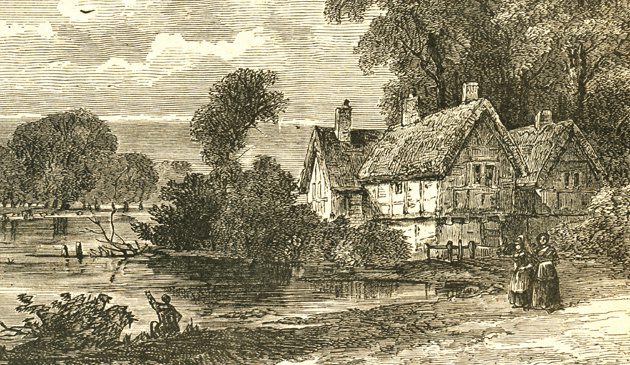In brief – Restoration London

Looking across St. James’s Park towards Whitehall Palace in about 1680, with Banqueting House in the centre, in this engraving published in the 19th century.
The principle schools for the sons of wealthy parents were those at St. Paul’s Cathedral and Westminster Abbey. The children of the poor could be educated at Christ’s Hospital. The Royal Mathematical School was founded in 1673 in order to train children in mathematics and navigation for the navy and merchant shipping. According to the Act of Uniformity of 1662 all teachers had to be licensed by the Church of England but a number of small non-conformist schools were founded in the latter 17th century in the country hamlets outside of the City, such as at Hackney. Several Quaker schools operated for girls.
In the latter 17th century and throughout the 18th century a major impact on London life was made by coffee houses, which became numerous throughout the city. Coffee arrived in England from North Africa via Italy in the late 16th century and the first coffee house in London opened in the 1650s. Tea and drinking-chocolate also began to become popular around the same time.
Amusements in the second half of the 17th century included a visit to the New Spring Garden at Vauxhall, which opened in 1661. Thomas Sadler opened a dance hall at his wells – Sadler’s Wells – near Islington in 1682. It was quite normal for people, especially the middle classes, to play instruments at home and many households contained a ‘virginal’, a stringed instrument that preceded spinets and harpsichords. Dancing was also popular, particularly with middle class women who often attended dance classes.
The performance of plays had been banned during the Commonwealth period but London’s theatres flourished again from the time of the Restoration. Initially only two theatre companies were licensed: The King’s Men and the Duke of York’s Company. In January 1661 Samuel Pepys – a regular in the audience – recorded in his diary his first visit to a play in which women played female parts. Charles Hart and Nell Gwyn were two of the most famous performers of the period and John Dryden the most influential playwright.
One of the most famous early English composers, Henry Purcell, was born at Westminster and may have started composing as early as nine years old. At twenty-two he was the organist at Westminster Abbey and Composer-in-Ordinary to the King’s Violins. He also worked with the dramatist Dryden producing ‘dramatic operas’.
It became fashionable amongst aristocrats and the middle classes to have a portrait painted, as well as buying landscapes and other types of painting, so a number of artists made a good living in London. The most famous portrait painters following the Restoration were Peter Lely and Samuel Cooper.
After the Great Fire the London-based map-publisher John Ogilby produced the first fully accurate plan map of London (as opposed to earlier pictorial maps) and set a new standard that has lasted into the modern age. Ogilby also produced several other ground-breaking maps and atlases: his 1675 Britannia was the first to chart England’s main roads, on a scale of one inch to the mile. At that time there was no national length for a mile but Ogilby used one thousand seven hundred and sixty yards, which became the imperial standard.


